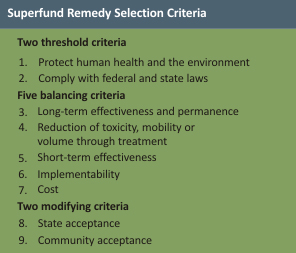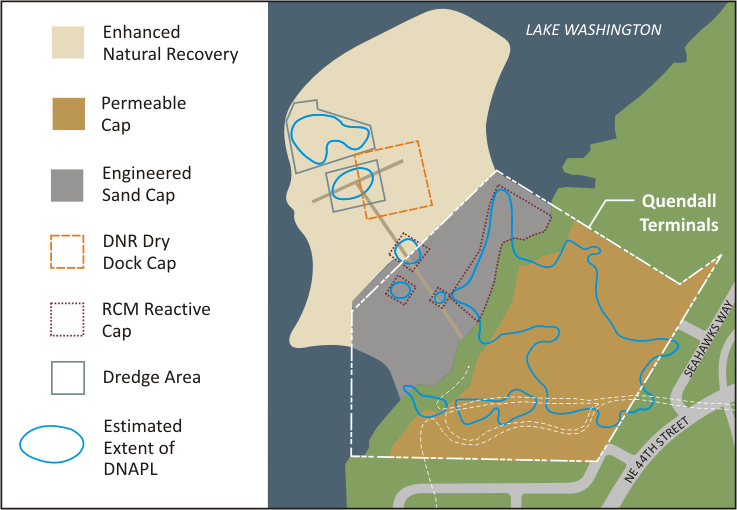|
The preferred remedy would:
- Treat, by in place solidification, underground contamination in upland areas posing the greatest potential future risk or most significant source of contamination to groundwater.
- Place a permanent cap over 22 acres of the Site to prevent direct human or ecosystem contact with isolated contamination.
- Install groundwater treatment systems along the shoreline to remove contamination so it is not released into Lake Washington.
- Prevent potential future releases into the nearshore habitat area by installing a cap over the most highly contaminated sediments in the nearshore area.
- Dredge the highest contaminated sediment out of the lake bottom near the old “T” dock and remove it for proper disposal off-site.
- Take just a few years to construct and cost approximately $34 million.
|
The preferred remedy would result in the treatment or removal of highly contaminated materials.
- Solidify approximately 28,200 cubic yards (cy) of contaminated soil in the Quendall Pond Upland area and deep contamination in the Railroad and May Creek Channel areas, resulting in treatment of an estimated 55,800 gallons of contamination.
- Remove approximately 12,200 cy of sediment, containing an estimated 33,700 gallons of contamination, from the T Dock area.
- Remove approximately 8,000 gallons of contamination from the construction and operation of the collection trenches and construction of the permeable reactive barrier.
|



